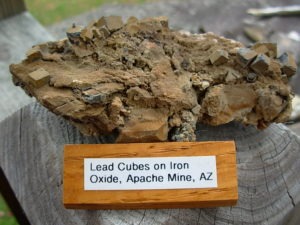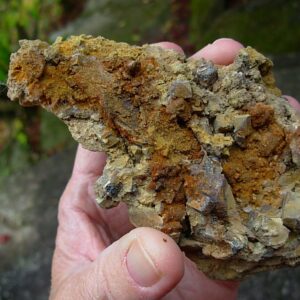Lead
 Lead is a chemical element with atomic number 82 and symbol Pb (from Latin: plumbum). It is a soft, malleable, and heavy metal. Freshly cut solid lead has a bluish-white color that soon tarnishes to a dull grayish color when exposed to air; the liquid metal has shiny chrome-silver luster.
Lead is a chemical element with atomic number 82 and symbol Pb (from Latin: plumbum). It is a soft, malleable, and heavy metal. Freshly cut solid lead has a bluish-white color that soon tarnishes to a dull grayish color when exposed to air; the liquid metal has shiny chrome-silver luster.
Lead is a bright silvery metal with a very slight shade of blue in a dry atmosphere. It tarnishes on contact with moist air. Lead's characteristic properties include high density, softness, malleability, ductility, poor electrical conductivity compared to other metals, high resistance to corrosion, and a tendency to react with organic reagents.
Lead is denser than most common materials. Lead has the second highest atomic number of all practically stable elements. Lead is relatively easy to extract, but because of its softness and dullness, there was little demand for lead. Galena is a principle ore of lead which often has silver in it. Lead was often mined for its silver content of Galena.
Lead's cubic structure and high atomic weight give it a very high density, hence the saying “go down like a lead balloon”. Lead is likely to form minerals that do not sink into the core but that stay above on Earth in its crust. This results in a great availability of lead minerals and easy extraction of the metal. Lead sulfide (Galena) has been mined for many years, as was metallic Lead. Metallic Lead does occur in nature, but it is rare.
The main lead mineral is Galena (PbS). Galena is mostly found with other minerals, mostly zinc ores. Most other lead minerals are normally related to galena in some way; for example, boulangerite is a mixed sulfide derived from galena; anglesite is a product of galena oxidation; cerussite or white lead ore is a decomposition product of galena. Zinc, copper, arsenic, tin, anitmony, silver, gold, and bismuth are common impurities in lead minerals.

